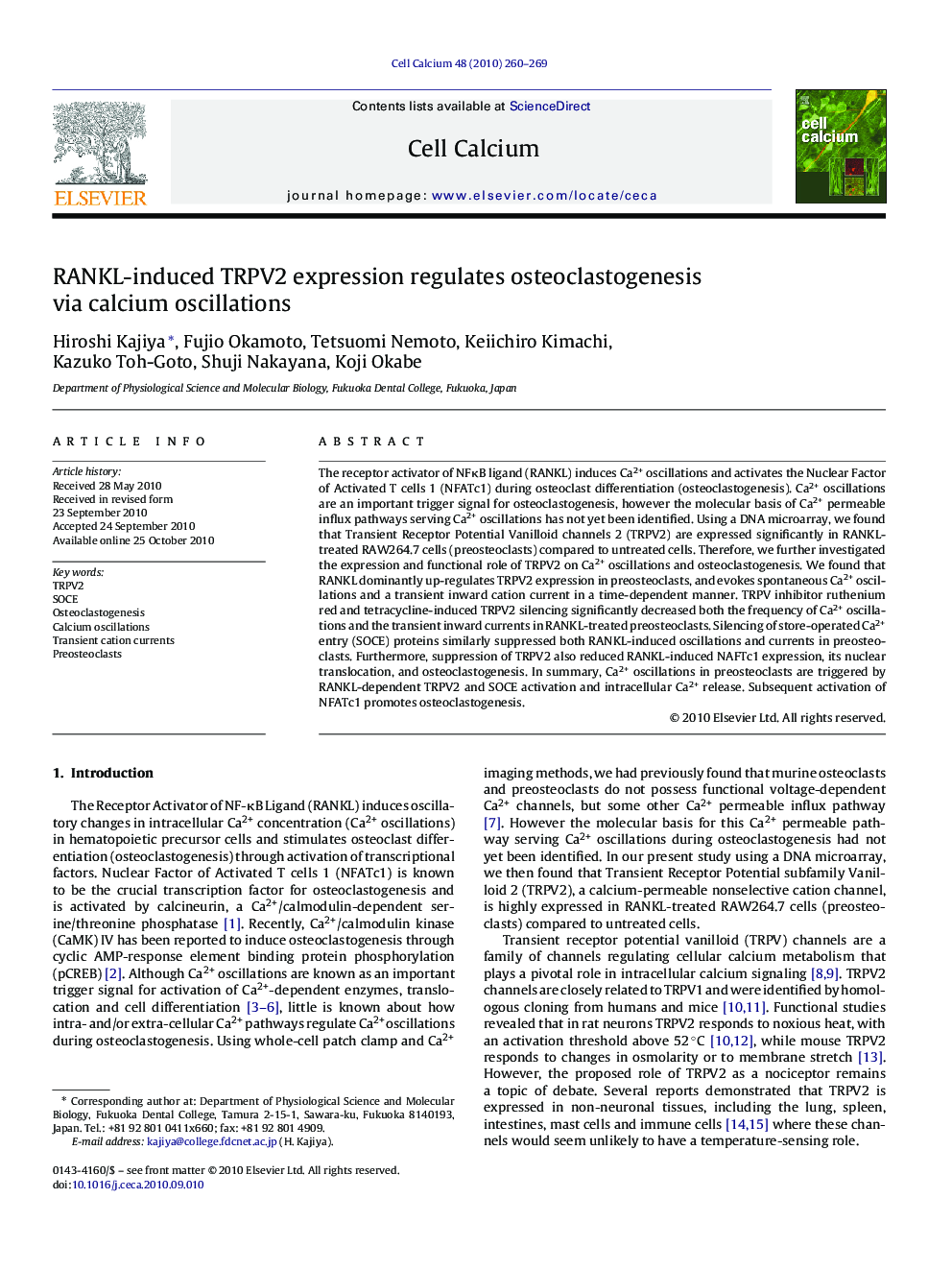| Article ID | Journal | Published Year | Pages | File Type |
|---|---|---|---|---|
| 10926384 | Cell Calcium | 2010 | 10 Pages |
Abstract
The receptor activator of NFκB ligand (RANKL) induces Ca2+ oscillations and activates the Nuclear Factor of Activated T cells 1 (NFATc1) during osteoclast differentiation (osteoclastogenesis). Ca2+ oscillations are an important trigger signal for osteoclastogenesis, however the molecular basis of Ca2+ permeable influx pathways serving Ca2+ oscillations has not yet been identified. Using a DNA microarray, we found that Transient Receptor Potential Vanilloid channels 2 (TRPV2) are expressed significantly in RANKL-treated RAW264.7 cells (preosteoclasts) compared to untreated cells. Therefore, we further investigated the expression and functional role of TRPV2 on Ca2+ oscillations and osteoclastogenesis. We found that RANKL dominantly up-regulates TRPV2 expression in preosteoclasts, and evokes spontaneous Ca2+ oscillations and a transient inward cation current in a time-dependent manner. TRPV inhibitor ruthenium red and tetracycline-induced TRPV2 silencing significantly decreased both the frequency of Ca2+ oscillations and the transient inward currents in RANKL-treated preosteoclasts. Silencing of store-operated Ca2+ entry (SOCE) proteins similarly suppressed both RANKL-induced oscillations and currents in preosteoclasts. Furthermore, suppression of TRPV2 also reduced RANKL-induced NAFTc1 expression, its nuclear translocation, and osteoclastogenesis. In summary, Ca2+ oscillations in preosteoclasts are triggered by RANKL-dependent TRPV2 and SOCE activation and intracellular Ca2+ release. Subsequent activation of NFATc1 promotes osteoclastogenesis.
Related Topics
Life Sciences
Biochemistry, Genetics and Molecular Biology
Cell Biology
Authors
Hiroshi Kajiya, Fujio Okamoto, Tetsuomi Nemoto, Keiichiro Kimachi, Kazuko Toh-Goto, Shuji Nakayana, Koji Okabe,
